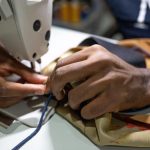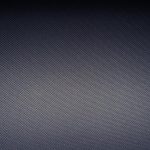Looking to market armor that seamlessly combines durability and comfort? Understanding which fabrics are best for this purpose is crucial.
By evaluating factors such as fabric durability, breathability, and cost-effectiveness, you can make informed decisions about the materials that will best showcase your armor.
Additionally, considering the impact of fabric on armor flexibility and specialized applications will allow you to tailor your marketing approach effectively.
This guide will provide you with detailed insights into the various fabric options available, helping you make informed choices that align with your marketing objectives.
Key Takeaways
- Fabric construction, durability testing, and fabric durability are important factors to consider when marketing armor fabrics.
- Fabric breathability, comfort, and moisture-wicking properties should be taken into account for marketing armor.
- The choice of fabric should align with marketing objectives and customer needs, considering factors like flexibility, performance, and cost per wear.
- High-performance fabrics like Kevlar, Dyneema, and Spectra are ideal for high-impact protection applications, as they offer exceptional strength and durability.
Understanding Fabric Durability
You need to understand the durability of fabrics to ensure the effectiveness of marketing armor. Fabric durability is crucial for marketing armor as it directly affects the performance and longevity of the product. Understanding the fabric construction and how it holds up under various conditions is essential.
Fabric construction refers to the way the fibers are woven or knitted together to form the fabric. This construction method greatly influences the fabric's strength and durability.
Durability testing is a key aspect of assessing fabric durability. It involves subjecting the fabric to various stressors such as abrasion, tension, and exposure to different environmental conditions to evaluate its performance over time. By conducting thorough durability testing, you can determine how well the fabric will hold up in real-world applications, allowing you to make informed decisions about its suitability for marketing armor.
Considering these factors will enable you to select fabrics that not only meet the necessary functional requirements but also have the durability needed to withstand the rigors of marketing armor.
Evaluating Breathability and Comfort
When evaluating armor fabrics for marketing purposes, it's crucial to consider breathability and comfort.
Understanding the breathability of the fabric and how it affects the wearer's comfort is essential in determining the best materials for marketing armor.
Breathability in Armor Fabrics
How effectively can armor fabrics maintain breathability and comfort during extended wear?
When evaluating breathability and comfort in armor fabrics, consider the following:
- Material Composition: Look for fabrics that incorporate advanced fabric technology to wick away moisture and allow for better airflow.
- Ventilation Design: Seek armor with strategic ventilation points to enhance breathability without compromising protection.
- Armor Flexibility: Prioritize fabrics that offer flexibility to enable natural body movement, reducing discomfort during extended wear.
- Moisture Management: Choose fabrics with moisture-wicking properties to keep the body dry and comfortable, especially during prolonged use.
Considering these factors will help you find armor fabrics that prioritize breathability and comfort without sacrificing protection.
Comfort for Marketing Armor
To evaluate the breathability and comfort of marketing armor, consider the fabric's ability to maintain airflow and moisture-wicking properties. Comfort assessment plays a vital role in fabric selection for marketing armor.
Breathability is essential to prevent the buildup of heat and moisture, ensuring that the wearer remains comfortable. Look for fabrics that promote airflow, allowing heat and moisture to escape while maintaining a comfortable body temperature.
Moisture-wicking properties are also crucial as they help to keep the skin dry and prevent discomfort caused by sweat accumulation. When assessing comfort, prioritize fabrics that offer a balance between breathability and moisture-wicking, ensuring that the marketing armor provides both protection and comfort for the wearer.
Selecting the right fabric is integral to achieving the desired level of comfort in marketing armor.
Cost-Effectiveness of Fabric Choices
You should prioritize the cost-effectiveness of fabric choices for marketing armor. When considering the cost-effectiveness of fabric choices, it's essential to evaluate their longevity and performance.
Here are some key points to consider when assessing the cost-effectiveness of fabric choices for marketing armor:
- Durability: Opt for fabrics that offer exceptional durability and longevity. This will ensure that the armor maintains its quality and appearance over an extended period, reducing the need for frequent replacements and repairs.
- Performance: Choose fabrics that provide high-performance capabilities, such as resistance to wear and tear, flexibility, and ease of maintenance. These factors contribute to the overall cost-effectiveness of the fabric choice as they can reduce the long-term expenses associated with upkeep and replacements.
- Cost per Wear: Evaluate the fabric choices based on their cost per wear. While some fabrics may have a higher initial cost, their durability and performance may result in a lower cost per wear over time, making them a more cost-effective option.
- Maintenance Costs: Consider the maintenance requirements and associated costs of the fabric choices. Fabrics that are easy to clean and maintain can lead to cost savings in the long run, making them a more cost-effective investment for marketing armor.
When assessing the cost-effectiveness of fabric choices for marketing armor, these factors play a critical role in making informed decisions that align with both quality and budget considerations.
Impact of Fabric on Armor Flexibility
Choosing the right fabric for marketing armor significantly influences its flexibility and overall performance. The impact of fabric on armor flexibility is crucial in determining the effectiveness of the armor in different scenarios. The flexibility of armor is directly related to the fabric used in its construction. Different fabrics offer varying degrees of flexibility, and understanding the performance trade-offs associated with each fabric is essential for creating armor that meets the desired specifications.
To better understand the impact of fabric on armor flexibility, consider the following table:
| Fabric Type | Flexibility Level | Performance Trade-offs |
|---|---|---|
| Kevlar | High | Reduced breathability |
| Nylon | Moderate | Lower puncture resistance |
| Spandex | Very High | Decreased durability |
This table provides insight into how different fabric choices can impact the flexibility and overall performance of armor. By carefully considering the flexibility impact and performance trade-offs associated with each fabric, you can make informed decisions when marketing armor to meet the specific needs of your customers.
Marketing Considerations for Fabric Selection
When marketing armor, it's essential to factor in the potential trade-offs of fabric selection on flexibility and performance. The fabric performance directly impacts the overall functionality and durability of the armor, making it a crucial aspect of your marketing strategy.
Consider the following when selecting the fabric for your armor:
- Durability: The fabric chosen should be able to withstand wear and tear, ensuring the armor remains in top condition even after repeated use.
- Flexibility: Balance the need for a flexible fabric with the necessary protection the armor provides. A fabric that allows for a wide range of motion without compromising protection can be a significant selling point.
- Breathability: Armor that allows for airflow can greatly enhance the wearer's comfort, making it more appealing to potential customers.
- Aesthetics: The appearance and texture of the fabric can greatly influence the marketability of the armor. Choose a fabric that not only performs well but also looks visually appealing to your target audience.
Considering these factors in your marketing strategy will help you select the best fabric for your armor, ensuring it meets both performance and marketability requirements.
Specialized Applications and Fabric Selection
For marketing armor, consider the unique fabric requirements for specialized applications, such as high-impact protection or extreme environmental conditions. Fabric performance is crucial in specialized applications where the armor is subjected to intense stress. High-performance fabrics like Kevlar, Dyneema, and Spectra are known for their exceptional strength and durability, making them ideal for high-impact protection. These fabrics offer outstanding resistance to abrasion and tearing, providing reliable armor solutions for applications such as ballistic vests and protective gear for extreme sports.
Fabric customization plays a significant role in meeting the specific demands of specialized applications. Customizing fabrics allows for the development of armor tailored to the environmental conditions it will encounter. For instance, in extreme environmental conditions like arctic or desert environments, fabrics can be customized to provide insulation, moisture-wicking properties, or UV protection, depending on the specific needs of the armor. Additionally, customization can involve incorporating antimicrobial properties to combat odor and bacteria in protective gear used for prolonged wear.
Understanding the fabric performance and the potential for customization is essential when selecting fabrics for specialized applications. By evaluating these factors, you can ensure that the armor meets the stringent requirements of its intended use.
Frequently Asked Questions
Can Certain Fabrics Affect the Weight of the Armor And, if So, How Does This Impact the Wearer's Mobility and Agility?
Certain fabrics can affect the weight of armor, impacting your mobility and agility. Lighter fabric weight can enhance maneuverability, while heavier fabric weight may hinder movement. Choosing the right armor fabric is crucial for agility impact.
Are There Any Environmental or Weather-Related Factors That Should Be Considered When Selecting Armor Fabric?
When selecting armor fabric, consider the environmental impact and weather resistance. Ensure the fabric can withstand various conditions, such as extreme temperatures, moisture, and abrasion. This will provide optimal protection and comfort for the wearer.
How Do Different Fabrics Affect the Overall Appearance of the Armor and Its Visual Appeal to Consumers?
When selecting armor fabric, different fabrics can significantly impact the overall appearance and visual appeal to consumers. Fabric aesthetics and consumer preferences play a crucial role in the marketability of armor. Consider these factors when making your selection.
Are There Any Safety or Health Considerations Related to the Use of Specific Fabrics in Armor Manufacturing?
When considering safety and health impact, it's crucial to assess the weight impact and wearer mobility. Certain fabrics may affect these factors, so it's important to prioritize safety considerations and potential health impacts.
What Role Does the Fabric Play in the Overall Maintenance and Care of the Armor, and Are There Specific Cleaning or Storage Requirements for Different Fabric Choices?
To maintain armor, fabric maintenance is crucial. Different fabrics require specific cleaning techniques and storage methods. Regularly inspect and clean the fabric, following manufacturer's guidelines. Proper storage in a dry, cool environment will preserve the integrity of the armor.
- Chamois Fabric Wholesale: Top Suppliers and Manufacturers - June 22, 2025
- Micro Chamois Fabric by the Yard: Best Suppliers - June 22, 2025
- PVA Chamois Fabric by the Yard: A Comprehensive Buying Guide - June 22, 2025





